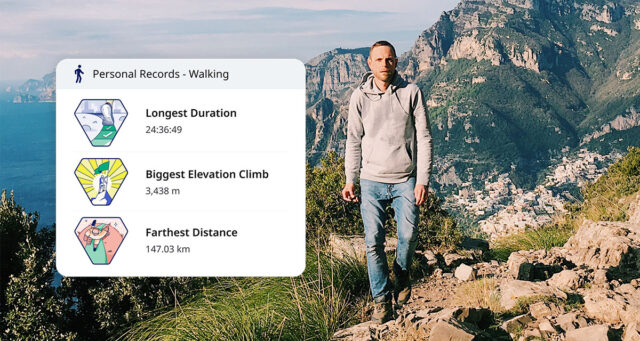Winter running may look picturesque on social media, but it often feels far from it. Winter running comes with cold temperatures, less daylight, and icy roads. While you can toss on a tank and shorts in summer and head out the door, running in the cold requires more preparation. However, you do not have to resign yourself to a season without running or the treadmill for months on end. You can train in cold weather – and even enjoy it – with the proper preparation.
Running in the cold means fighting the elements. If your core temperature drops too much, your performance will suffer and your risk of hypothermia will increase. Thus, cold weather running is a game of staying warm–but not so warm that you sweat, which can also increase the risk of hypothermia. Once you master that, you can enjoy those picture-perfect snowy runs!
Warm up properly
A proper warm-up before a run is recommended any time of year. However, it is a step you do not want to skip in the winter. A warm-up sends more oxygen-rich blood to your working muscles, which raises the muscle temperature. Warmer muscles are better for performance and will help you feel more comfortable in the cold air. Without a warm-up, it will take longer for muscle temperature to rise in the cold, and you may feel sluggish for longer at the start of the run. Check out the best warm-ups and cool-downs for your runs.
Keep your core warm
If your core temperature drops too low, you may experience hypothermia. Prolonged exposure to the cold can cause your core temperature to drop. This can result from running outside in temperatures below freezing. To help prevent your core temperature from dropping, you want to dress appropriately. You want to cover your skin to prevent frostbite, including exposed areas like the hands, neck, and ears. Additional insulation around the core helps keep you warm.
Importantly, you do not want to overdress. Too many layers can cause you to sweat, even if it is cold outside. The function of sweat is to lower body temperature; in the cold weather, this can be uncomfortable at best and increase the risk of hypothermia at worst.
Give yourself time to adjust
Just like how your body adapts to running in the heat, you can acclimate to cold weather. The process requires patience and exposure to the cold. The more you run in the cold, the more your body adapts to the temperature. Your thermoregulation improves and, with time, cold temperatures feel more tolerable.
You do not need to do anything drastic to acclimate to the cold. Underdressing will not quicken the process and comes with the risk of hypothermia. Instead, just consistently run in the cold, appropriately dressed.
Don’t skip your pre-run snack
The cold weather affects your respiration rate. As a result, your body burns more carbohydrates and less fat for energy, even at the same intensity. Without enough carbohydrates available in your muscles or bloodstream, you may fatigue more quickly on runs. To minimize fatigue when running in the cold, eat a carb-rich snack about 1-2 hours before your run. Check out this article about how to fuel for a run.
Pick appropriate footwear
Your regular daily trainers may not provide enough protection or traction for winter running. Ice and snow are more slippery. Falling on snow can increase the risk of injury, not to mention it simply is not a pleasant experience. Normal road running shoes are often not water-resistant, and so snow can enter into the shoe and make your feet wet. Wet feet in winter can increase the risk of cold injury. Fortunately, you can purchase various styles of crampons. These devices slip onto the bottom of your shoe and use small metal spikes to provide traction and stability on snow and ice.
Another alternative to crampons is trail shoes. Most trail shoes provide traction and water resistance. The lugs on trail shoes provide extra traction on the snow and ice. The water resistance keeps moisture from snow out, which prevents your feet from getting cold and wet.
Head to the ASICS and explore some cold-weather-appropriate running gear. We bet you’ll find some great styles to complement your run during winters.
By dressing appropriately, fueling well, and making the appropriate adjustments to training, running in the cold is possible. You may even find that, once you are prepared, running in the cold is enjoyable!
Please note: This blog is not intended to be a substitute for professional medical advice, diagnosis, or treatment. Always seek the advice of your physician or other qualified health provider with any questions you may have regarding a medical condition.






